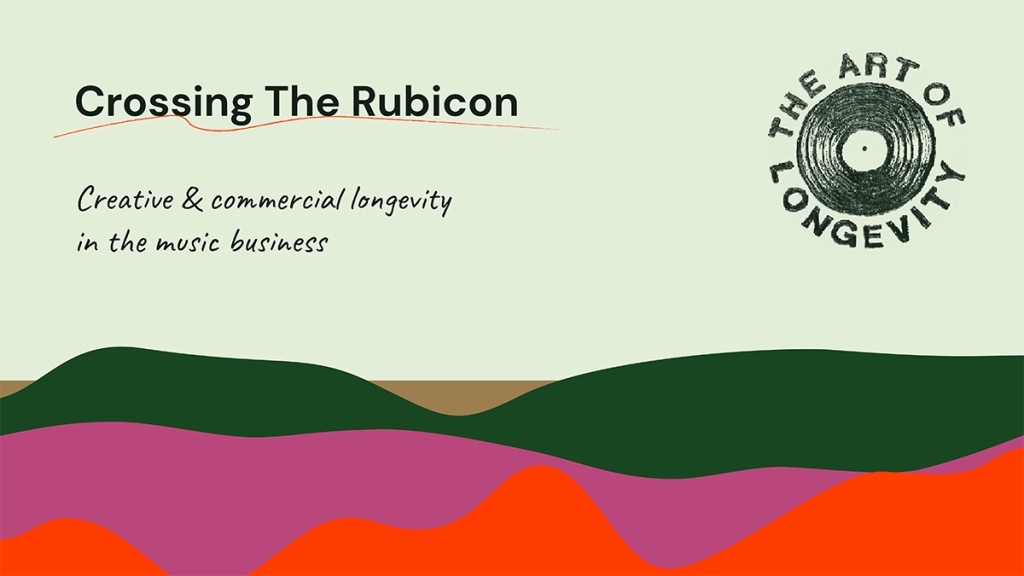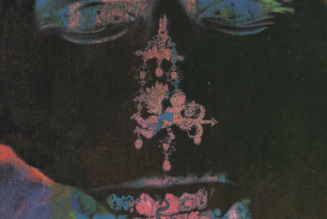Which current popular music artists will still be significant 25 years from now? It’s a question Keith Jopling posed with the latest expansion of his Art of Longevity project, titled “Crossing the Rubicon.” The answers lie within its first “white paper,” featuring case studies of 25 artists that have guested on Jopling’s podcast of the same name, including Suede, Norah Jones, KT Tunstall, Tears for Fears, Gary Numan, Los Lobos, Everything Everything, Death Cab For Cutie, Calexico, Teenage Fanclub, the Waterboys, Interpol, Barenaked Ladies, Spoon, the Divine Comedy, Belle and Sebastian and Turin Brakes, among others. Read an excerpt below.
One of the most common sayings in the music industry is that “every artist is different.” It makes marketing music and artists much more unpredictable than breakfast cereal, soft drinks, or resort holidays. It’s probably the reason why music should not be filtered by algorithms – the idea should be to stand out rather than fit in.
These are all individual longevity stories, yet the patterns suggest that lessons do apply. As an artist, a ‘hit’ song is worth pursuing, even in these competitive times when the charts don’t matter so much. It’s about making your mark. A good album helps, but hits matter more.
Overcoming adversity is critical because the chances are you will stumble. Each album cannot always be better than the last one. You may get dropped by your label as a result, fall out with your manager, or with each other. You may end up losing a key band member. It is what happens next that really matters to a longevous career. Hence, it might be better to view a creative career as a journey, with each album a key outpost along the way. Ergo, labels should not drop artists hastily. If they’ve been successful once, chances are they can repeat that success, just in a different way.
As an artist with some success, you can make a misstep and survive. A ‘weaker’ album, or an experiment that doesn’t come off. If you do, you must then make a genuine creative comeback or have another hit. Perhaps that’s the very reason to make a misstep – to force yourself back to your best. Self-sabotage is risky, but it can work sometimes.
There are some bigger questions that emerge too. What is success in the streaming era? If chart positions are too fleeting to matter, and streaming numbers don’t equate to much in monetary terms, how do we measure an artist’s success, at least as far as their recording career is concerned? My conversation with Everything Everything’s Jonathan Higgs explored this subject — the band’s ‘stats’ prove somewhat inconclusive. Neither the band, management nor their label could really be certain the band was “successful” (they are, but by what measure?). Ultimately, if an artists is earning a comfortable living from music, then they are successful in that they can continue.
If dominance is important to longevity, does that mean long careers are limited to just those few dominant artists in the streaming era? Before streaming there were less creators making music, but more of them were able to share exposure to large audiences via radio and chart success. Today, buried underneath the vast catalogues and onslaught of more & more releases, will Wolf Alice, Fontaines D.C., Dry Cleaning or Celeste make it to their 10th album?
Most interesting of all perhaps, what makes a classic album in the streaming era? If classic albums have contributed much to artists’ longevity, then what happens if there are no more? Albums that reveal new stories through repeated listening. Albums revered by the critics and consumed by vast swathes of the public, much written about, discussed and emulated: cultural landmarks, laid down for longevity – even immortality.
Many of the artists we’ve featured here have recently made superb albums, including Nerina Pallot, Turin Breaks, Everything Everything, Norah Jones, the Coral. But will they be considered classics? And consider Suede. Suede’s 2022 album “Autofiction” is the band’s ninth studio record and another creative high for a band that has made classics. But will Autofiction be considered a classic? Will enough people hear it to warrant such a claim? While it reached number 2 in the UK chart, what does that mean compared to those early records that sold multiples more and filled column after column of music industry press? Will the album go gold, or platinum, and what do those certifications mean in the streaming era? Does Brett Anderson care if Autofiction wins industry awards?
It begs the question: if an album cannot become a classic, why make one at all? Why toil for four years on a body of work that distils 100 song ideas to 10 tracks, spending a fortune in process, only to see it flash across the charts and then evaporate into the mesh of 100 million songs? As mainstream success has fragmented, the role of the album has changed. Yet albums remain the key milestones for artists, each one an important body of work that as a whole, come to represent the artist’s career more than any other expression of their work. As that picture changes, longevity in music changes and perhaps, it isn’t built to last quite as long. That may be why many of the guests on “The Art of Longevity” have expressed gratitude to have begun their careers before streaming disrupted the music industry.
As the actor Tony Curtis once quipped, “my longevity is due to my good timing.”
Read the full report here and tune into season 7 of “The Art of Longevity” podcast, coming in Spring 2023.










